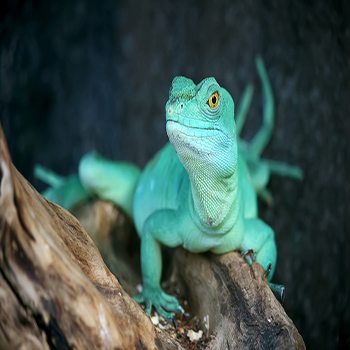No products in the cart.

[vc_row][vc_column][vc_column_text]Blue tongues, skinks, water dragons, and other lizards are fantastic buddies to encourage in your backyard. Skinks will eat up insects and their larvae, and larger skinks will take care of slugs and snails for you. You can create your own Lizard Conservation Area.
To encourage lizards in your garden:
Try to: Plant local native grasses and ground covers. A thick ground cover gives lizards plenty of good places to hide. Plant berry or nectar producing local natives as these will attract insects for lizards to eat. Leave leaf litter around your garden for small insects and their eggs. Mulch your plants – not only will this conserve moisture in your soil, but it will provide lots of good hiding places for lizards and their prey. Include some vines or creepers to cover your fences or walls. This will allow lizards to move up and down easily. Include areas of shade and heavy vegetation, as well as areas with lots of sunlight and sparse plantings, as lizards love the variety. Keep your cat indoors as much as possible, as they are natural hunters and will eat lizards and skinks if they can catch them. Install a cat run so that your cat can safely go outside without harming any lizard or other buddies.
Check for blue tongues before mowing the lawn or reversing out of the driveway. Include rocks, big bits of bark, and logs in your garden for lizards to sun themselves on, and hide in and under. Place your rocks and logs near some dense bushes or shelter so the lizard can quickly hide if a predator comes along. Provide a shallow bowl of water in a protected spot, and keep the water supply regular and fresh, and keep the bowl clean. Plant a strawberry plant as a special treat for a lizard such as a Bobtail. Include PVC pipes or stacks of bricks as sheltering spots for lizards if you can’t get fallen branches, logs or rocks. Old tin or roofing is also great in the garden as somewhere for lizards to sun themselves or hide under. Include a pond in your garden as somewhere to drink from, which will also encourage insects and frogs. Use some sticks or rocks to as a ramp to make it easy for any lizard that falls in to get out again. Compost your veggie scraps. Not only will this save waste from going into landfill, it will be great for your plants, and it will also attract insects and snails for lizards to eat. Avoid: Using chemicals, pesticides, non-organic fertilisers, or snail pellets in your garden. If a lizard eats a poisoned bug or snail, it can become sick and die.
Lizards also won’t hang around if there aren’t any bugs or snails to eat in your garden. Feeding your dog outdoors, as blue tongues may be drawn close by to snatch food from the dog bowl. While they are eating they are vulnerable to attack from domestic pets or birds. Taking rocks or logs from the bush to place in your garden. They are already someone’s home where they are! Collecting lizards from the park or bush for your garden. Simply provide the habitat for them, and lizards will find it – don’t you worry! Raking up. Let your piles of leaf litter, mulch, twigs and so on accumulate and the lizards will love you for it. Feeding lizards in your backyard, as they are great at finding their own food, and can become dependent on you for a feed. This can quickly turn against the lizard if you go on a long holiday or move house.
Some good plants for lizards include: Bottlebrush, Callistemon species Grevilleas Grasses such as Wallaby Grass, Kangaroo Grass, Weeping Grass Native Violet Mat Rush Purple Coral Pea Dianella species Dwarf Baeckia
http://www.backyardbuddies.org.au/for-reptiles/create-a-lizard-friendly-garden[/vc_column_text][/vc_column][/vc_row]
